This is a list of prefects of Istria County .
 |
|---|
This is a list of prefects of Istria County .
Istrian Democratic Forum (IDF)
Istrian Democratic Assembly (IDS)
| № | Portrait | Name (Born–Died) | Term of Office | Party | |
|---|---|---|---|---|---|
| 1 |  | Luciano Delbianco (1954–2014) | 4 May 1993 | 23 January 1997 | IDF |
| 2 |  | Stevo Žufić (1951–) | 23 January 1997 | 24 July 2001 | IDS |
| 3 |  | Ivan Jakovčić (1957–) | 24 July 2001 | 7 June 2013 | IDS |
| 4 |  | Valter Flego (1972–) | 7 June 2013 | 6 July 2019 | IDS |
| 5 | Fabrizio Radin (1959–) | 6 July 2019 | 11 June 2021 | IDS | |
| 6 | Boris Miletić (1975–) | 11 June 2021 | Incumbent | IDS | |
| Ind. | |||||

Istria is the largest peninsula within the Adriatic Sea. Located at the top of the Adriatic between the Gulf of Trieste and the Kvarner Gulf, the peninsula is shared by three countries: Croatia, Slovenia, and Italy, 90% of its area being part of Croatia. Most of Croatian Istria is part of Istria County.
The Istrian Democratic Assembly is a centre to centre-left, regionalist, liberal political party in Croatia primarily operating in Istria County.

Istria County is the westernmost county of Croatia which includes the majority of the Istrian peninsula.

"Istrian scale" refers both to a "unique" musical scale and to the folk music genres from Istria and Kvarner which use that scale. It is named for the Istrian peninsula. Istrian folk music is based on a distinctive six-tone musical scale, and the peninsula's two-part, slightly nasal singing. The two-part singing and playing in the Istrian scale, a traditional singing practice characteristic of the Istrian region and the north Adriatic coastal area and islands, was inscribed in UNESCO's List of Intangible Cultural Heritage in 2009.

The Julian March, also called Julian Venetia, is an area of southern Central Europe which is currently divided among Croatia, Italy, and Slovenia. The term was coined in 1863 by the Italian linguist Graziadio Isaia Ascoli, a native of the area, to demonstrate that the Austrian Littoral, Veneto, Friuli, and Trentino shared a common Italian linguistic identity. Ascoli emphasized the Augustan partition of Roman Italy at the beginning of the Empire, when Venetia et Histria was Regio X.
Chamber of Counties elections were held in Croatia for the first time on 7 February 1993. The result was a victory for the Croatian Democratic Union, which won 37 of the 63 elected seats.
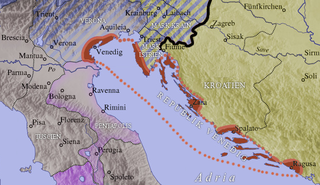
The March of Istria was originally a Carolingian frontier march covering the Istrian peninsula and surrounding territory conquered by Charlemagne's son Pepin of Italy in 789. After 1364, it was the Istrian province of the Habsburg monarchy, the Austrian Empire and Austria-Hungary.
Istrian Socialdemocratic Forum was a regional left-wing political party in Istria County of Croatia.
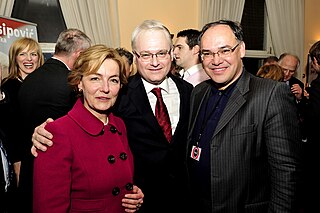
Damir Kajin is a Croatian politician.

Ivan Jakovčić is a Croatian politician who served as prefect of Istria County from 2001 to 2013.

Istrian Italians are an ethnic group from the Adriatic region of Istria in modern northwestern Croatia and southwestern Slovenia. Istrian Italians descend from the original Latinized population of Roman Histria, from the Venetian-speaking settlers who colonized the region during the time of the Republic of Venice, and from the local Croatian people who culturally assimilated.

Italians of Croatia are an autochthonous historical national minority recognized by the Constitution of Croatia. As such, they elect a special representative to the Croatian Parliament. There is the Italian Union of Croatia and Slovenia, which is a Croatian-Slovenian joint organization with its main site in Rijeka, Croatia and its secondary site in Koper, Slovenia.

Istria is the largest peninsula in the Adriatic Sea. The peninsula is located at the head of the Adriatic between the Gulf of Trieste and the Bay of Kvarner. It is shared by three countries: Croatia, Slovenia, and Italy.

Pietrapelosa is a castle in the Croatian part of Istria, now ruined. In the medieval period a family took their name from the castle. "Pietrapelosa" comes from the Italian words meaning "hairy stone" after the moss that has always grown on the walls of the castle. It is one of the best-preserved of the Istrian castles.

The Italian irredentism in Istria was the political movement supporting the unification to Italy, during the 19th and 20th centuries, of the peninsula of Istria. It is considered closely related to the Italian irredentism in Trieste and Rijeka (Fiume), two cities bordering the peninsula.

Valter Flego is a Croatian politician who was a Member of the European Parliament for Croatia from 2 July 2019 to 15 July 2024. Previously he had served as the 4th prefect of Istria County from 2013 to 2019, as well as serving three terms as mayor of the town of Buzet. He is a member of the liberal Istrian Democratic Assembly (IDS) party.
Boris Miletić is a Croatian economist and politician who has been prefect of Istria County since 2021 and president of the Istrian Democratic Assembly (IDS) from 2014 to 2021.
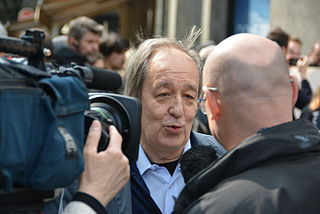
Furio Radin is a Croatian politician who is currently serving as a Member of the Croatian Parliament for the Italian national minority, an office he has held since 7 September 1992. He has also been the Chair of the Parliamentary Committee on Human Rights and Rights of National Minorities since 2000, and one of the Deputy Speakers of the Parliament since 9 June 2017. Radin is the longest-serving Member of Parliament in Croatian history, with a service lasting 32 years, 112 days, as of 28 December 2024.
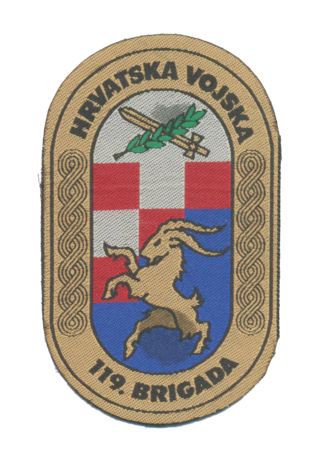
The 119th Brigade, was a Croatian Army guards brigade formed on 7 September 1991 in Pula, western Croatia, with personnel from the former Territorial Defense Brigade Joakim Rakovac. It is, together with the 1st Home Guard Battalion Pula and the 154th Brigade HV, one of the military units from Istria drafted for the Croatian War of Independence. During the Croatian War of Independence, the 119th Brigade primarily operated in the areas of Glibodol, Saborsko, Plitvice, Rakovica, Tržačka Raštela, as well as Slavonia and Dubrovnik.
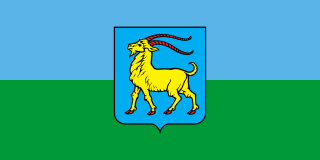
Istrian identity, also known as Istrianity, Istrianism or Istrianness, is the regionalist identity developed by the inhabitants of the part of Istria located in Croatia. Istria is the biggest peninsula in the Adriatic Sea and a multiethnic region divided between Croatia, Italy and Slovenia. Italians and Slovenes live in both the Italian and Slovene parts, while in the Croatian part, there are Croats, Italians, Istro-Romanians and Istriot-speakers, as well as some non-native minorities. Most of Croatian Istria is located in the Istria County of the country. Istria is the region of Croatia where regionalist sentiment is the strongest.